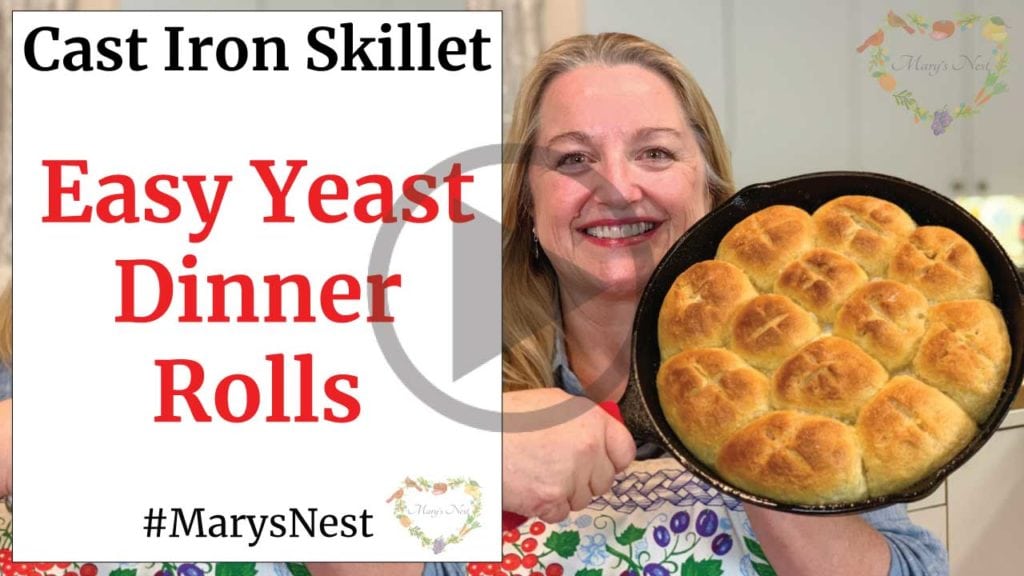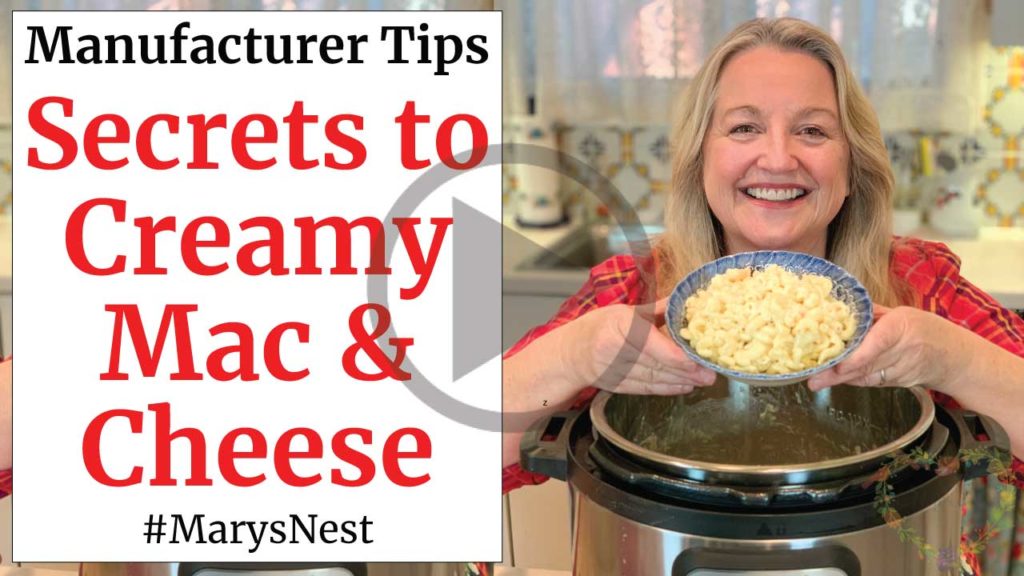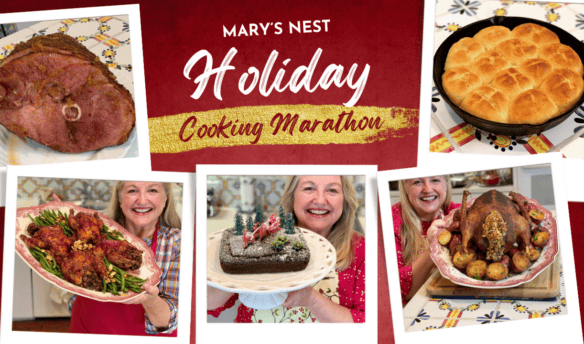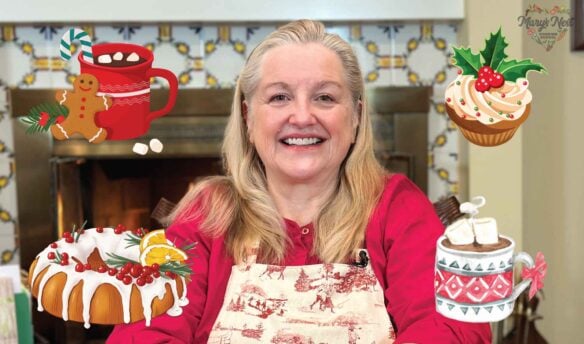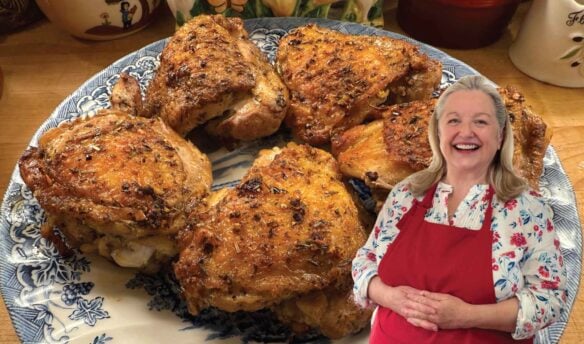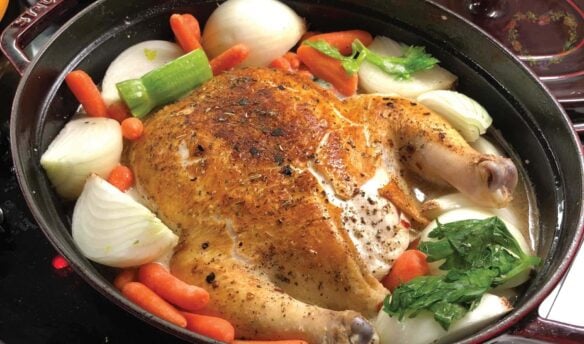Learn how to make the best roast duck with an orange marmalade glaze. This recipe is perfect for any special occasion, and it’s especially delightful for your Christmas or New Year’s Day dinner.
Affiliates note: As an Amazon Associate I earn from qualifying purchases. My content may contain affiliate links to products and services. If you click through and make a purchase, I’ll receive a small commission. It does not affect the price you pay.
Table of Contents
- It’s Easy to Make Roast Duck
- What is the Best Cooking Temperature for Roast Duck?
- The Modern Pioneer Cookbook
- How I Like to Cook a Roast Duck
- What Can I do with Duck Fat after Making a Roast Duck?
- Is Duck Fat Nutritious?
- More Specialty Poultry Recipe
- The Modern Pioneer Pantry
- Looking for Pastured Raised Meats and Poultry?
- Looking for More Holiday Recipes?
- Christmas Recipes and Gifts
- Roast Duck Recipe with an Orange Marmalade Glaze Recipe
- Shop for items used in this blog post or video
It’s Easy to Make Roast Duck
Making a roast duck is much simpler than you may think. As I show you in my recipe video, you’ll pop it into a roasting pan in the oven and rotate it once or twice to render all the luscious duck fat that you can use later. Then, in about 3 hours, your duck will be ready to serve. That’s it!
This roast duck has tender falling-off-the-bone juicy meat with a crispy skin. It’s glazed with an orange marmalade sauce that gives the duck a rich, roasted appearance.
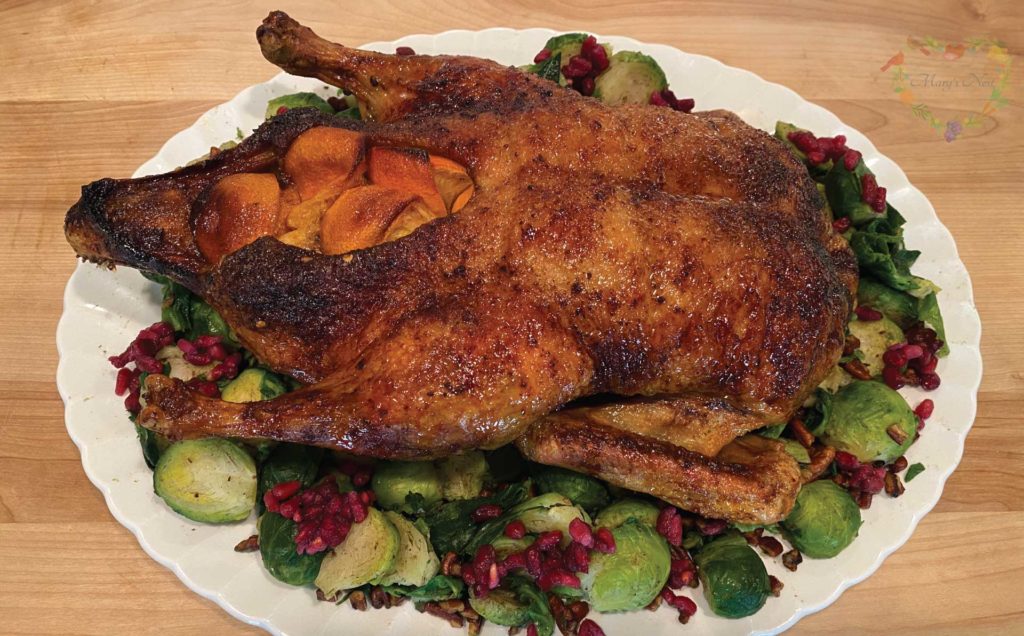
What is the Best Cooking Temperature for Roast Duck?
The United States Department of Agriculture (USDA) and many chefs have different opinions on the best cooking temperature for roast duck.
USDA Recommendation for Roast Duck
USDA guidelines recommend cooking a whole duck (or goose) to a safe minimum internal temperature of 165°F (74°C) measured using a food thermometer.
You can check the duck’s internal temperature by placing the food thermometer in the innermost part of the thigh. Be sure to avoid the bone as you will not get an accurate reading.
Many Chefs Differ from the USDA Recommendation
If you read a number of chef-inspired recipes for cooking duck, you’ll find that their recommended temperature differs from the USDA minimum. These recipes often advise cooking duck to an internal temperature of anywhere from 135°F to 145°F (57°C to 63°C). Unfortunately, this temperature range creates a duck that is rare or medium-rare.
Chefs claim that cooking at this temperature creates a roast duck at its most tender and flavorful best. But is it? I’m not so sure. Personally, I find the rare or medium-rare duck meat unappetizing. And if you are new to cooking duck or any game bird for that matter, you might find it a bit unpalatable too!
How I Like to Cook a Roast Duck
I can’t imagine cooking a roast duck rare or even medium-rare. The meat looks very pink, even a deep red or purple sometimes! And the meat of a duck cooked at these lower temperatures has a rubbery texture.
I like to go slightly above what the USDA recommends. Instead of cooking my duck to 165°F (74°C), I prefer to roast my duck to at least an internal temperature of 170°F (77°C). However, I would be much happier to cook my duck to an internal temperature of 180°F (82°C).
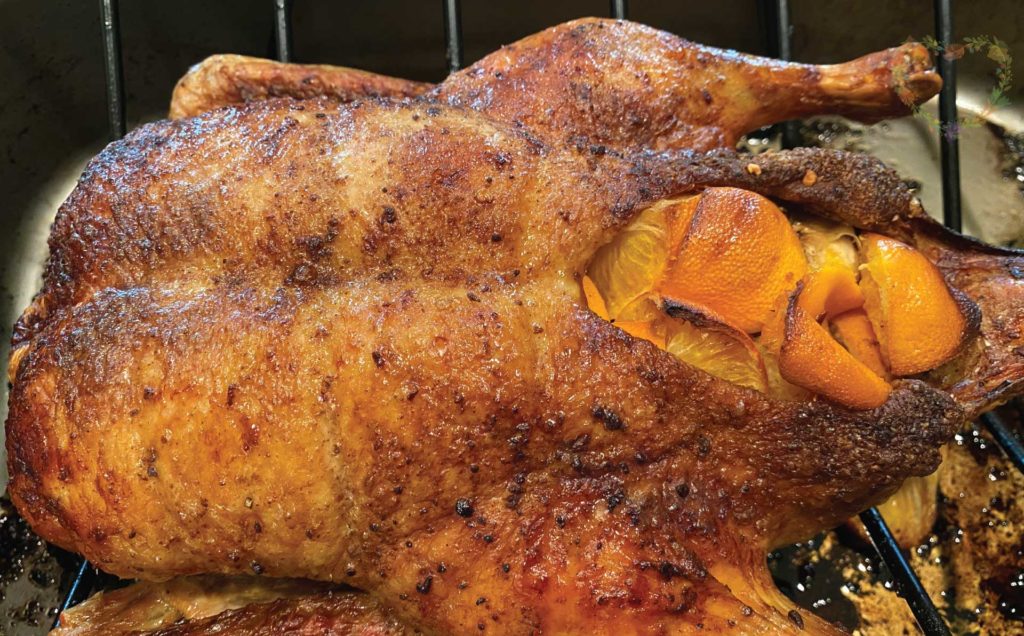
Preparing roast duck at 180°F (82°C) provides lots of benefits:
- Super crispy skin,
- Leg and thigh meat that’s thoroughly cooked and falling off the bone, and
- Breast meat that is still tender and juicy
What Can I do with Duck Fat after Making a Roast Duck?
As you are cooking your roast duck, you will periodically remove the roasting pan from the oven to flip your duck so that it cooks thoroughly on both sides.
And while you have the duck out of the oven, you will have the opportunity to remove the rendered duck fat from the roasting pan.
Duck fat is prized for its excellent flavor and has many uses, such as:
- Roasting potatoes or other root vegetables
- Sautéing greens
- Using in place of butter in baking recipes
- Spreading right onto bread or toast
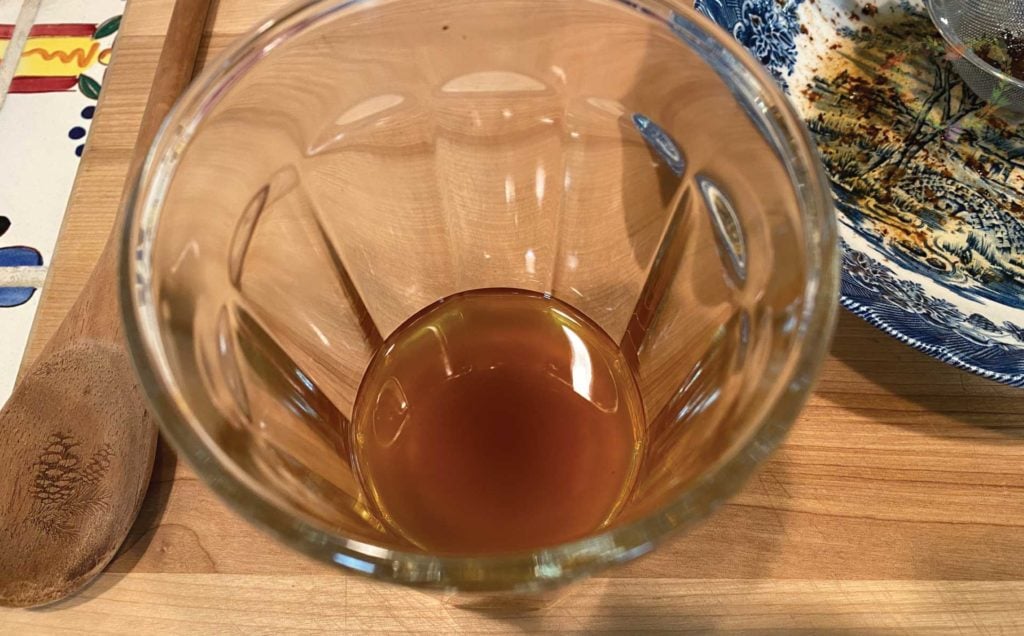
Is Duck Fat Nutritious?
You might be surprised to learn that duck fat is actually very nutritious. Duck fat contains high levels of oleic acid, which is also found in olive oil. And we have certainly all heard about the benefits of adding olive oil to our diets.
Research suggests that oleic acid may have a beneficial impact on reducing inflammation in our bodies. Reducing internal bodily inflammation is vital since it is often linked to disease. So the more we can eat foods that will tamp down inflammation, the better!
For more information, visit:
More Specialty Poultry Recipe
If you enjoyed learning how to make a roast duck, be sure to check out the recipe videos below, where I share how to roast Rock Cornish Game Hens and Goose. Like the duck, these unique dishes will make a wonderful celebratory or holiday meal!
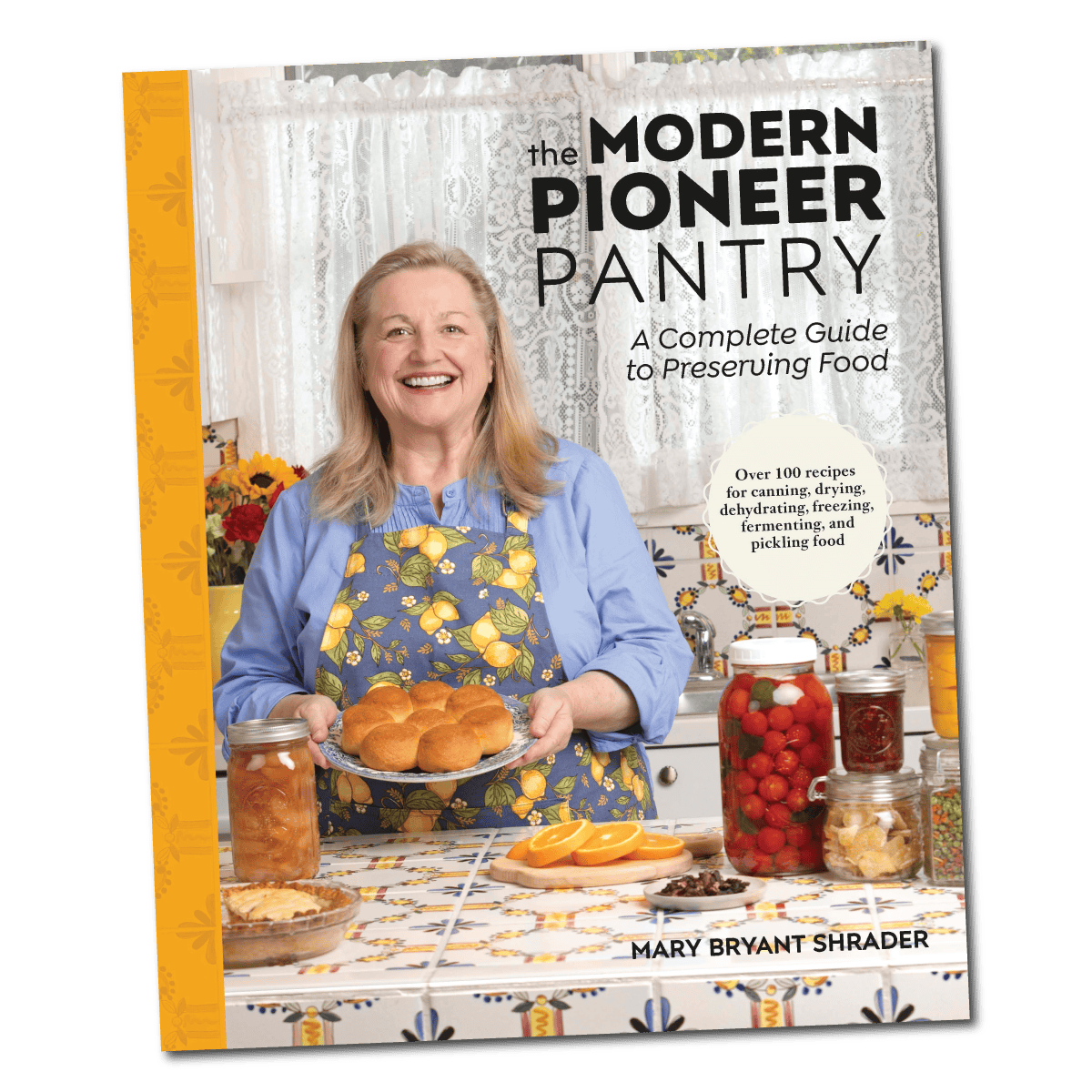
preOrder YOUR COPY Now!
The Modern Pioneer Pantry
Simple ingredients, timeless techniques, and a well-stocked pantry. Discover over 100 nourishing recipes to preserve food and turn pantry staples into delicious, homemade meals. Build a wholesome, traditional pantry—just like a modern pioneer!
Looking for Pastured Raised Meats and Poultry?
If you can’t find grass-fed meats or pasture-raised poultry in your neighborhood supermarket or farmer’s market, check out US Wellness Meats for a wide variety of beef, lamb, pork, poultry, and more.
- Use discount code MARYNEST and my link for a one-time savings of 15% off regular-priced items on your US Wellness Meats order. You can shop for a variety of products, including:
This post is not sponsored. I’m a long-time customer of US Wellness Meats because I have always been impressed by the quality of their products. Check out my US Wellness Meats unboxing video to see the types of products you can get, including bones for beef bone broth!
Looking for More Holiday Recipes?
Check out the videos below for more ideas for your holiday dinner table. You’ll find a recipe for easy and delicious yeast dinner rolls and a downloadable diagram for a giant party platter that you can take to the grocery store to get the items you need for your holiday celebrations.
Christmas Recipes and Gifts
Thoughtful Holiday Homemade Gifts and Best Board Games for Families
Spread holiday joy with easy homemade food gifts and the best board games for family fun.
Festive Recipes: Holiday Cooking Marathon
This holiday cooking marathon brings together my best holiday recipe videos for you to enjoy in one sitting
10 Best Homemade Christmas Gifts and More!
Learn how to make these easy homemade gifts and discover other products perfect for your favorite traditional foods cook.
Stay in Touch with Mary’s Nest
- Subscribe to My YouTube Channel for Traditional Foods Videos (Free) - When you subscribe, be sure to click on the notification bell that will let you know each time I upload a new video.
- Subscribe to Mary’s Traditional Foods Newsletter (Free) - Get a free 36-page eBook for signing up: How to Stock Your Essential Traditional Foods Four-Corners Pantry.
- Join the Traditional Foods Kitchen Academy - For more detailed videos and exclusive members-only perks, join my YouTube membership community.
- Order The Modern Pioneer Cookbook - Get a hardcover book of Mary's nourishing recipes from a Traditional Foods Kitchen. This bestselling cookbook is published by Penguin Random House with their DK imprint.
- Preorder The Modern Pioneer Pantry - Be one of the first to get Mary's hardcover book about preserving food and making delicious meals from your Four Corners Pantry. Mary's second cookbook is also published by Penguin Random House.
I look forward to having you join me in my Texas Hill Country Kitchen!
I’d like to receive more tips and recipes from Mary’s Nest.
Roast Duck Recipe with an Orange Marmalade Glaze
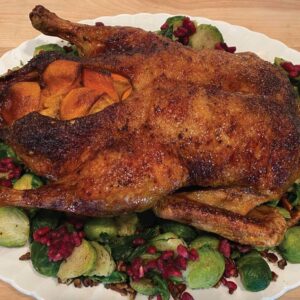
Equipment
- Roasting pan with rack or baking sheet with rack
- Baster
Ingredients
Roast Duck Ingredients
- 1 5-6 Pound Whole duck, raw
- 1 tbsp Coarse sea salt You can substitute fine sea salt or another fine ground salt, but reduce the amount to 1/2 tablespoon.
- 1/2 tsp Ground black pepper
- 1/4 tsp Red pepper flakes, optional
- 1 whole head Garlic, sliced in half lengthwise
- 6 small Mandarin oranges Or 3 large regular oranges.
- 1 tsp Fine ground sea salt Or another fine ground salt.
- 1 tsp Paprika
Orange Marmalade Glaze Ingredients
- 1 16 ounce jar Marmalade You can use a smaller jar of marmalade or substitute this ingredient with currant or apple jelly or apricot or peach jam.
- 1/2 cup Orange juice
Instructions
Roast Duck Instructions
- Defrost the duck according to the packaged instructions, and remove the internal giblets.
- Save the giblets, except for the liver. You can use the giblets to make bone broth or a poultry-based gravy.
- Cook the liver in a small frying pan as a cook's treat! It's very nutritious.
- Preheat the oven to 425°F (218°C).
- Using the tines of a sharp carving fork or a skewer, pierce the skin of the duck all over. Do this at a 45-degree angle, and take care to pierce only the skin and not the duck's meat. (See video.)
- Mix the coarse sea salt, black pepper, and red pepper flakes (if using) together, and rub this mixture in the duck's cavity.
- Stuff the duck with garlic and oranges.
- Mix the fine salt and the paprika together, and rub this mixture over the entire skin of the duck.
- Place the duck breast-side down on the roasting rack in the roasting pan.
- Place roasting pan into the preheated oven, close the oven door, and immediately lower the temperature to 350°F (177°C).
- After one hour of roasting time, remove the roasting pan from the oven and place it on a heatproof surface.
- Using two wooden spoons or other long-handled utensils, carefully flip the duck over so that it is breast side up.
- Using a baster, remove any duck fat from the roasting pan that has been rendered. Strain out any bits and decant the fat. (See video.)
- Return the roasting pan to the oven and continue to roast the duck for one more hour.
- After the second hour, remove the roasting pan from the oven and place it on a heatproof surface.
- If the bottom of the duck looks nicely browned, you do not need to flip the duck. You can continue to allow it to roast breast side up.
- Using a baster, remove any duck fat from the roasting pan that has been rendered. As before, strain out any bits and decant the fat.
- Return the roasting pan to the oven and continue to roast the duck for an additional one hour for a total of three hours until the internal temperature of the duck reaches 180°F (82°C). (Use a meat thermometer inserted at the thigh to measure the temperature of the duck. Be sure to avoid touching the bone so that you can get an accurate measurement.)
- If you decide to rotate the duck again after the second hour of cooking, you will want to rotate it one last time, approximately 15-30 minutes before it is done. Be sure to finish roasting the duck breast side up.
- Once the duck is fully cooked, remove the roasting pan from the oven and place it on a heatproof surface.
- Spoon the orange marmalade glaze over the duck and return the duck to the oven.
- Turn on the broiler and allow the glaze to begin to sizzle as the duck skin begins to become quite crispy. Watch this VERY closely. It will not take more than a minute or two.
- Remove the roasting pan from the oven and place it on a heatproof surface. Transfer the duck to a serving platter and allow it to rest for about 10 minutes before slicing.
- Roast duck is best enjoyed when it is initially cooked and served. However, leftovers can be stored in the refrigerator, well wrapped, for 1-2 days. Roast duck is best rewarmed in a skillet on the stovetop with a bit of water added.
- If you want to freeze any leftover duck, be sure to wrap it well and use it up within a few weeks. Technically, it can be stored in the freezer for up to 3 months, but the texture of the cooked duck does begin to deteriorate.
Orange Marmalade Glaze Instructions
- Strain the orange rind from the marmalade and place the strained marmalade in a saucepan. (See video.)
- Add orange juice to the saucepan.
- Stir well to incorporate marmalade and juice together and warm gently on the stovetop. Set aside and keep warm.
Notes
Shop for items used in this blog post or video
Favorite Kitchen Supplies
- Favorite Aprons
- Carving Knife and Fork (sharp tines)
- Roasting Pan with Rack
- Baster
- Silicone Brush
- Meat Thermometer
- Serving Platter
Amazon Shop and Shopping Guide
- Visit Mary’s Nest Amazon Shop
- Visit my Shopping Guide page
Get up to 15% off for stocking your Traditional Foods Pantry and equipping your Modern Pioneer Kitchen, including discounts from US Wellness Meats, Farmhouse Teas, Lehman's, Masontops, Cultures for Health, Survival Garden Seeds, Redmond Real Salt, Plan to Eat, and More!


